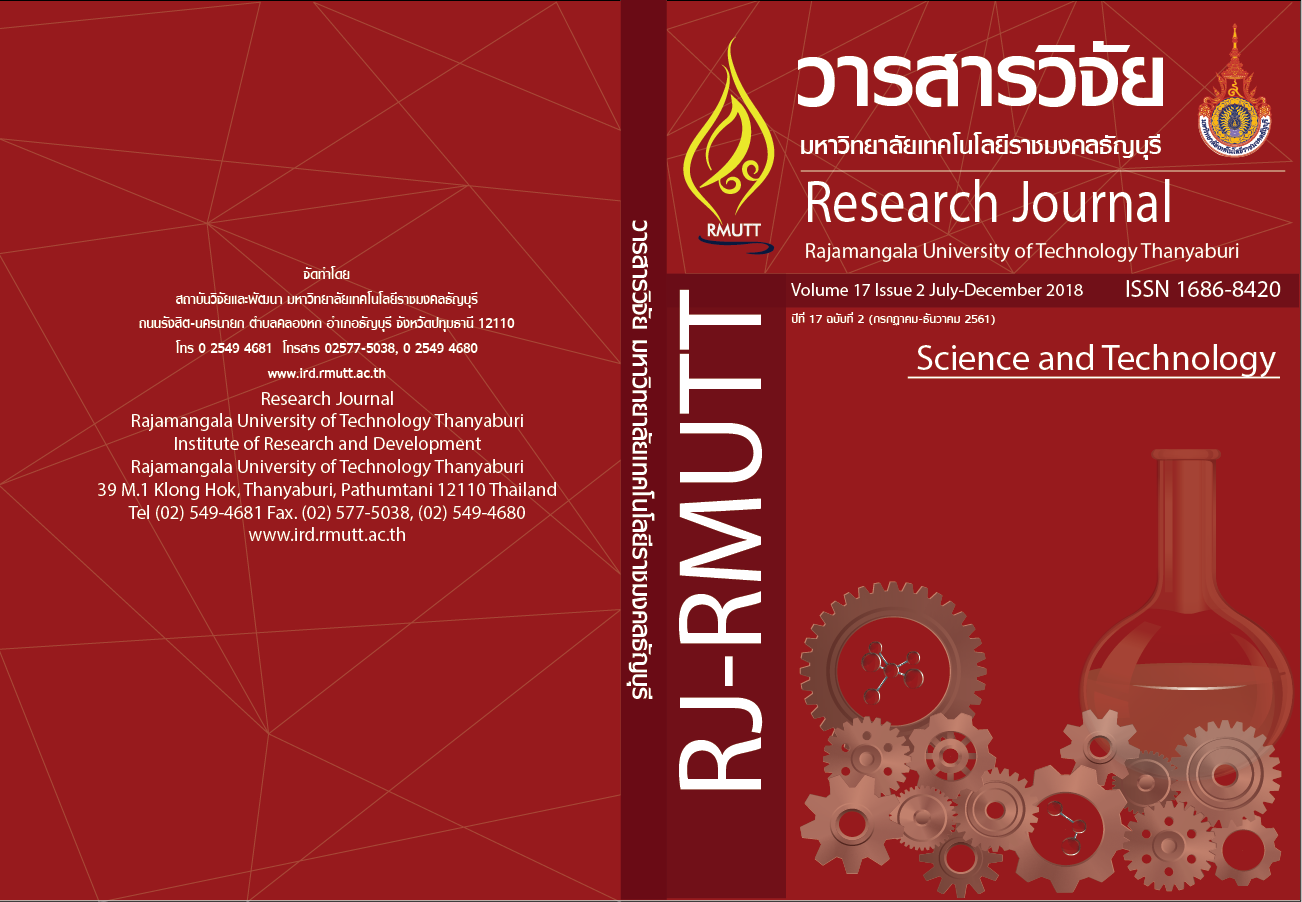Development of a Dried Lotus Seed Sheller
Main Article Content
Abstract
A dried lotus seed sheller was designed and developed with the main objective to reduce time and effort in removing the dried lotus seed pericarp for small and micro community enterprises. The prototype consisted of the main structure of the machine, the feeding unit, the shelling unit, the power transmission unit, and a 1 hp electric motor which was used as a prime mover. The operation started from dried lotus seeds were manually put into the chute on the top of the machine. Then, the feeding unit conveyed them to the shelling unit. Finally, the shelled seeds were released through the outlet chute at the bottom of the machine. The results of the prototype testing revealed that among the sheller speeds of 250, 300 and 350 rpm, the machine performed best at 300 rpm, capable of running at 3.18 kg/hour.The percentages of shelling and seed damage of lotus seeds were 81.00 % and 9.56 %, respectively. The power consumption was 0.67 kW-hour. Based on the analysis of engineering economics, it was found that the lotus seed sheller worked 1,920 hours per year, with an average cost of 9.6 baht per kilogram. The payback period was 2.24 months and the break-even point of the machine was 428.23 hours per year, compared to human labor.
Article Details

This work is licensed under a Creative Commons Attribution-NonCommercial-NoDerivatives 4.0 International License.
References
contents (24 ตุลาคม 2560).
[2] กรมส่งเสริมการเกษตร. 2554. สถานการณ์การผลิตบัว. [ออนไลน์] เข้าถึงได้จาก :http://www.
doae.go.th/LIBRARY/. (24 มกราคม 2556).
[3] ทวีพงศ์ สุวรรณโร. 2550. การทำนาบัว. เอกสารอิเล็กทรอนิกส์. สำนักส่งเสริมและฝึกอบรม มหาวิทยาลัยเกษตรศาสตร์.
[4] นิรนาม. 2559. นครพนมพลิกวิกฤต ทำนาบัวพืชศก. ขายดีโกยรายได้เดือนละ 3-4 หมื่นบาท. [ออนไลน์] เข้าถึงได้จาก: http:// http://www.matichon.co.th/news.
(23 เมษายน 2560).
[5] สุจิต เมืองสุข. 2559. กว่าจะมีวันนี้ ชาวปากคาด บึงกาฬ สู้ชีวิตลองผิดลองถูกปลูกบัวเก็บฝักขาย ฝักละบาท กำละสิบ เป็นอาชีพภาคภูมิใจ. [ออนไลน์] เข้าถึงได้จาก: https://www.khaosod.co.th/view_newsonline.php?newsid. (25 พฤษภาคม 2559).
[6] พรพรรณ วิจิตรวิทยาพงศ์. 2552. เมล็ดบัวแปรรูปที่พิจิตร สร้างงานเงิน ให้ชาวบึงสีไฟ. คอลัมน์ ชุมชน เข้มแข็ง หนังสือพิมพ์มติชน. [ออนไลน์] เข้าถึงได้จาก: http://www.matichon.co.th/matichon/view_news. (24 มกราคม 2556).
[7] นิรนาม. 2560. เม็ดบัวอบกรอบมาย. หจก. ที เเอลเทรดวินด์. แหล่งข้อมูล: http://www.mailotusseeds.com/ เข้าถึงเมื่อ: 24 มกราคม 2560.
[8] จตุรงค์ ลังกาพินธุ์, สุนัน ปานสาคร และภูรินทร์ อัครกุลธร 2558. การพัฒนาเครื่องกะเทาะเมล็ดบัวหลวงแห้ง. วารสารสมาคมวิศวกรรมเกษตรแห่งประเทศไทย ปีที่ 21 ฉบับที่ 1 ประจำเดือนมกราคม-มิถุนายน พ.ศ. 2558.
[9] นิรนาม. 2552. เครื่องกะเทาะเมล็ดบัวตากแห้ง. สำนักวิจัยและพัฒนาการอาชีวศึกษา. แหล่งข้อมูล: http://bverd.net/project_detail.phpproject_id89 เข้าถึงเมื่อ: 24 มกราคม 2559.
[10] Anon. 1983. Moisture Measurement pages 329-330. In: ASAE Standard sS 410, Agricultural Enginerring Handbook.
[11] จตุรงค์ ลังกาพินธุ์. 2558. ทฤษฏีของเครื่องจักรกลเกษตร. สำนักพิมพ์ทริปเพิ้ล เอ็ดดูเคชั่น จำกัด, กรุงเทพฯ.
[12] Krutz, G., Thomson, L. and Claar, P. 1994. Design of Agricultural Machinery. John Wiley and Sons. New York Chicheter Brisbne, Toronto, Singapore.
[13] Shigley, J.E. and Mischke, C.R. 1989. Mechanical Engineering Design. 5th Edition, McGraw-Hill Book Company, USA.
[14] จตุรงค์ ลังกาพินธุ์. 2560. ออกแบบและเขียนแบบวิศวกรรมด้วยโปรแกรม SolidWorks. พิมพ์ครั้งที่ 3, สำนักพิมพ์ทริปเพิ้ล เอ็ดดูเคชั่น จำกัด.
[15] Hunt, D. 2001. Farm Power and Machinery. (10th Edition). Ames, Iowa, USA: Iowa State University Press.

